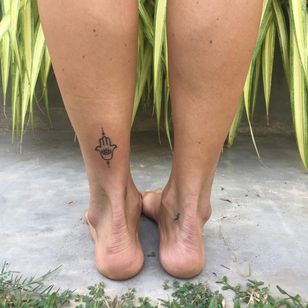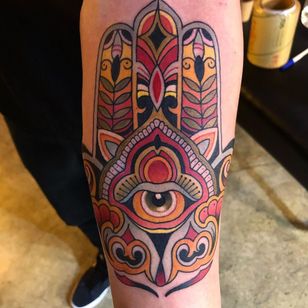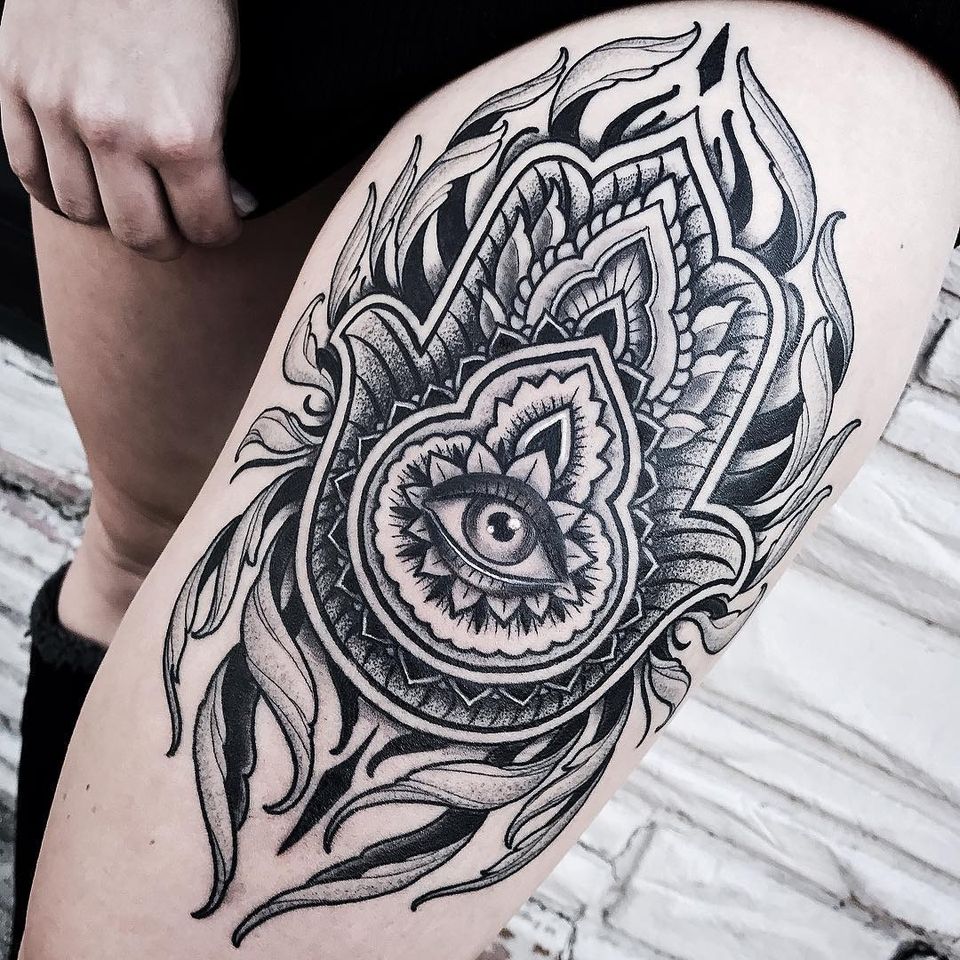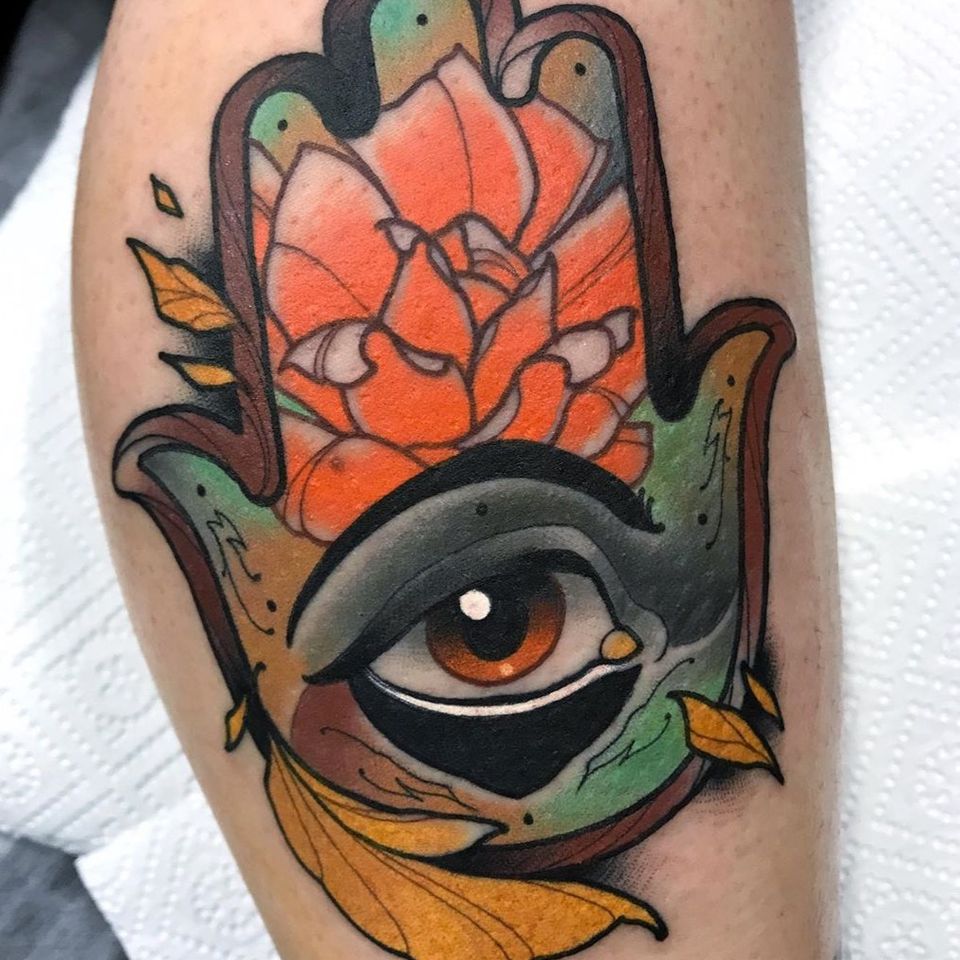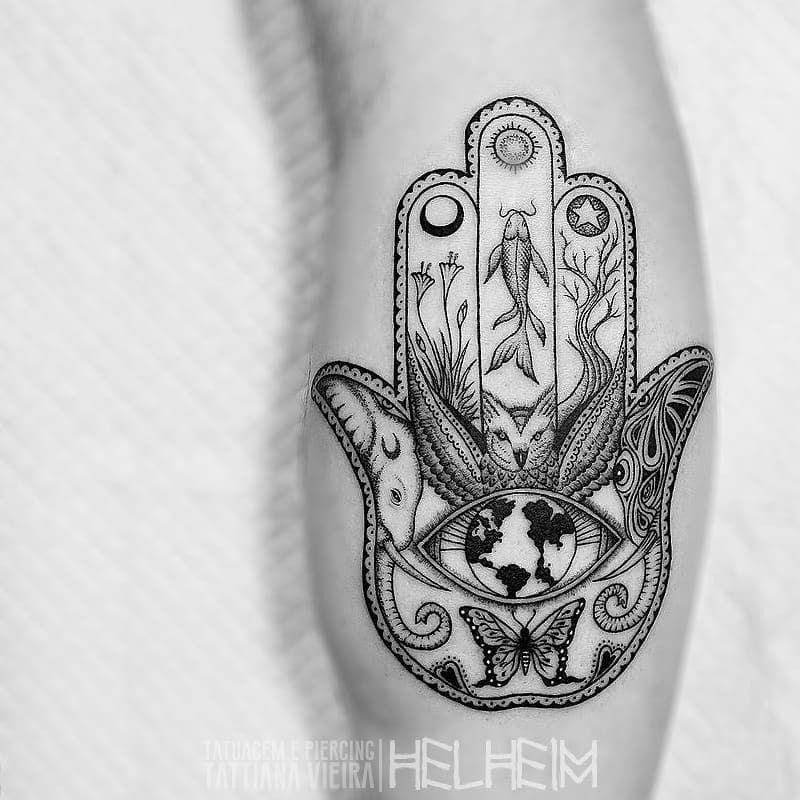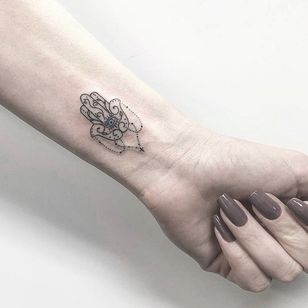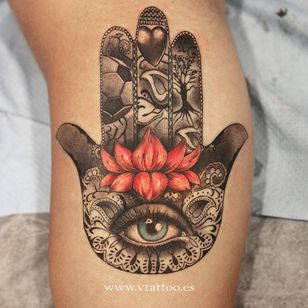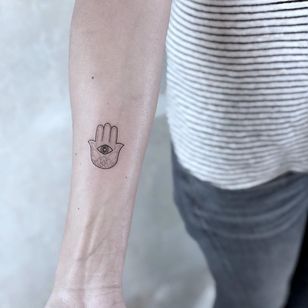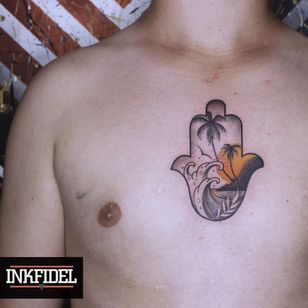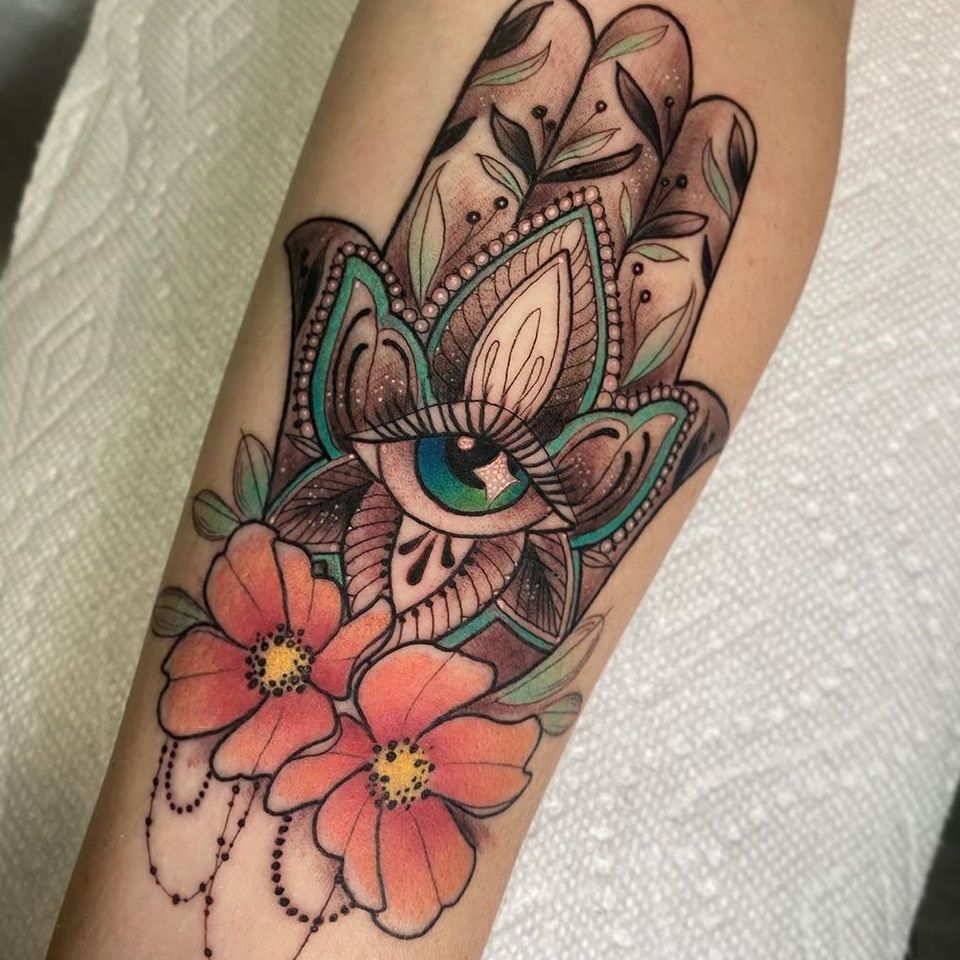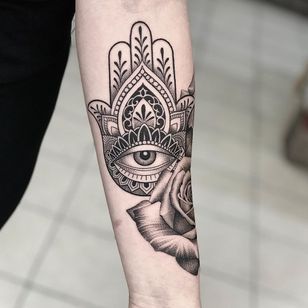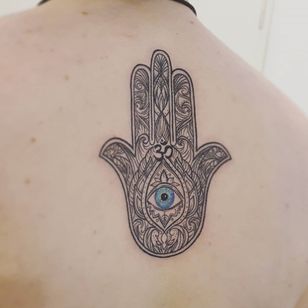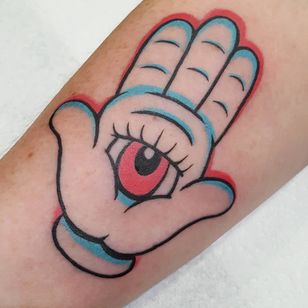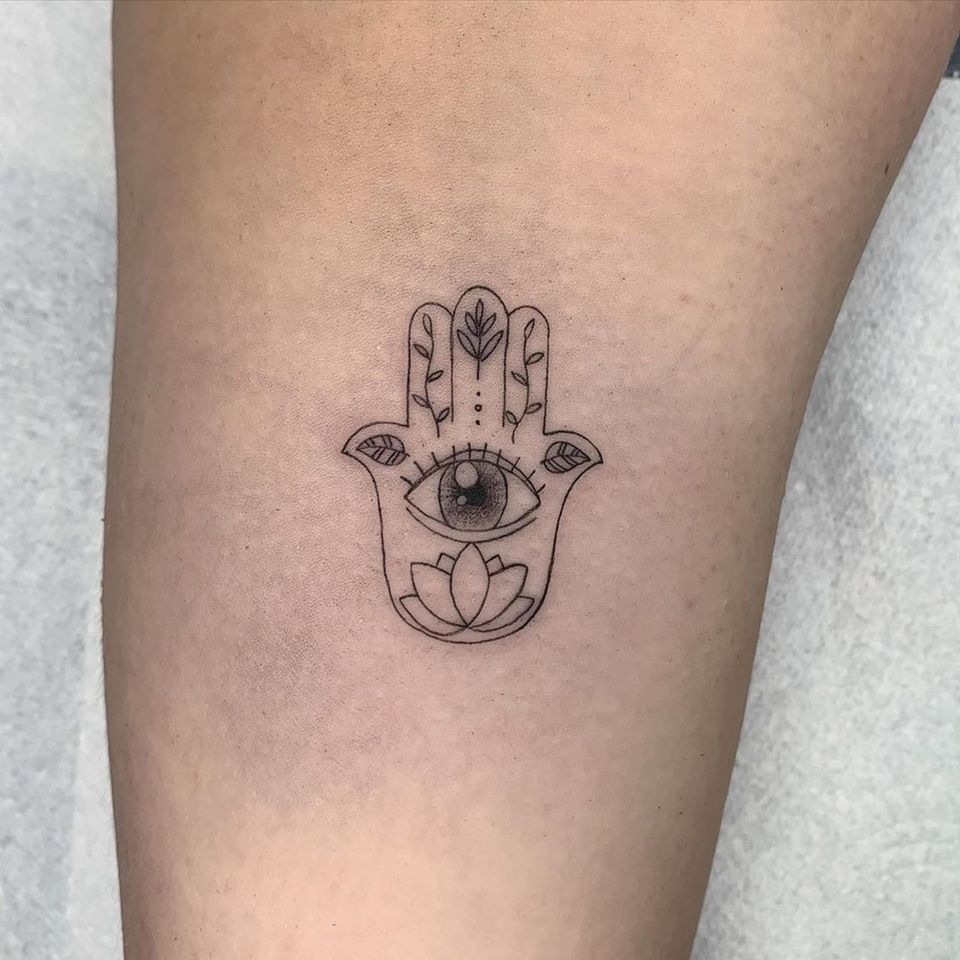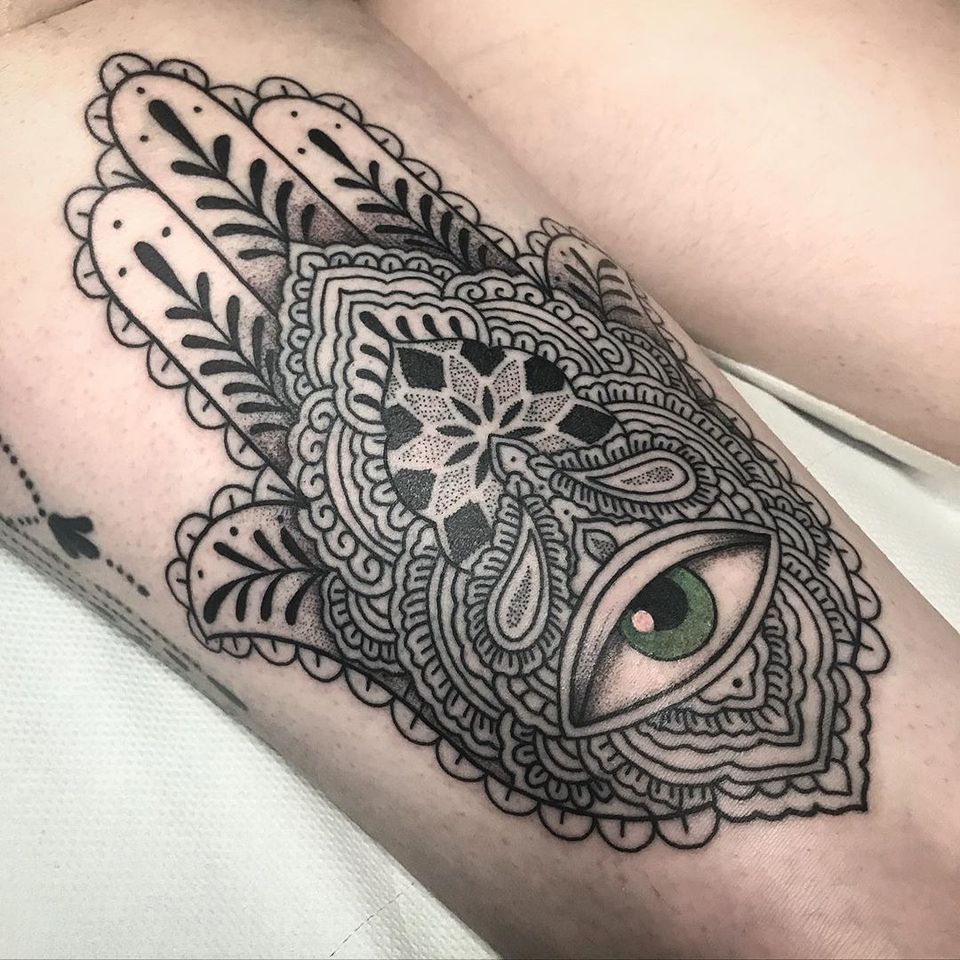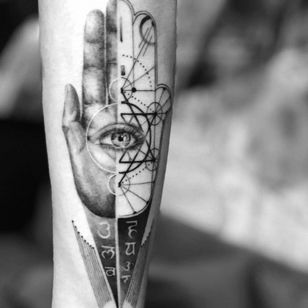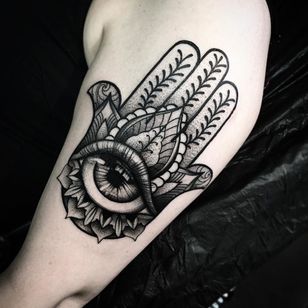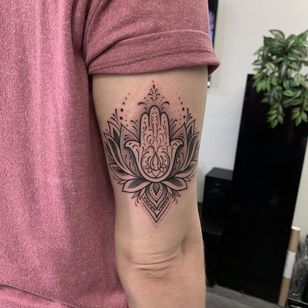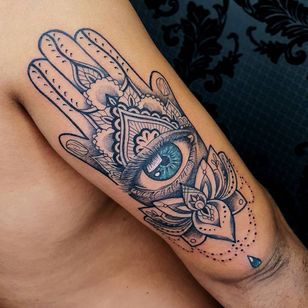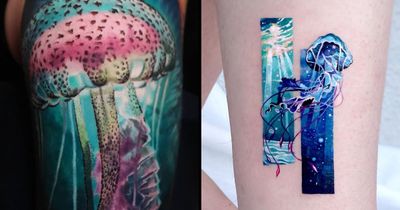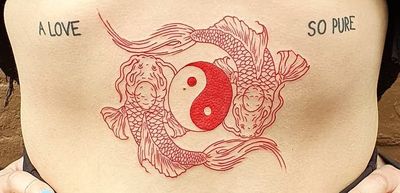20 Impeccable Hamsa Designs

Summary
Hamsa tattoos symbolize the “Hand of God”. They are believed to bring their wearers happiness, luck, health, and good fortune
The use of the traditional hamsa design can be traced back thousands of years, with its first known use discovered in artifacts within the ancient civilizations of Mesopotamia and Phoenicia. The hand, often depicted with two symmetrical thumbs, has been used for thousands of years to ward off what ancients have referred to as the “evil eye”. The hamsa hand has a wide variety of different spellings which include hamesh, hamsa, chamsa, and khamsa. It is also identified as the Hand of Miriam, Aaron and Moses’s sister, and the Hand of Fatima. As a symbol of spiritual protection, this revered amulet has had a history of use within almost every major religion, particularly in the Islamic and Jewish faiths. In this article we take you through the hidden meanings, history and application of this ancient symbol, as well as introducing you to some incredible hamsa tattoos ideas!
What is the Meaning of the Hamsa Tattoo?
The most universally agreed upon meaning of the hamsa tattoo is “protection against evil”. Hamsa tattoos traditionally depict a hand featuring two symmetrical thumbs pointing down or outward. The hamsa symbol, also referred to as the “Hand of Fatima” in Islamic faiths, or the “Hand of Miriam” in Judaism, has been used in tattooing and in spiritual practices to symbolize feminine power and invoke luck throughout the ages. The symbol has held a vast variety of additional meanings dependent upon the time period and culture in which it had use. Throughout recorded history this pervasive symbol has held spiritual importance to ancient civilizations across the globe. The hamsa design has been associated with almost all major world religions, with its usage tracing back to ancient Mesopotamia.
Hamsa tattoo by Aries Rhysing #AiresRhysing #hamsatattoo #hamsa #eye #hamsahand #spiritual #handofgod #geometric
From the dawn of early civilization, spanning to modern times, the hamsa symbol has been worn and utilized to protect against the foreboding “evil eye”. The evil eye is often defined as being the embodiment of a malicious look, or harmful words that can impart bad luck upon a person. The protection of the hamsa is even believed to shield its wearer from their own negative thoughts and feelings, which if left unchecked could wreak havoc on prosperity and luck. Many of life’s ills from poor health, to curses, to loss of material wealth and general misfortune have all been attributed to the evil eye. Why then you may ask, do people choose to wear evil eye tattoos, and what do they mean? Although there is no particular meaning given to the evil eye in the form of a tattoo, it is believed that wearing the very symbol of the evil eye also yields strong protection against dark forces.
Although there is no particular meaning given to the evil eye in the form of a tattoo, it is believed that wearing the very symbol of the evil eye also yields strong protection against dark forces.
Hamsa tattoo by Adrian Wietecha #adrianwietecha #hamsatattoo #hamsa #eye #hamsahand #spiritual #handofgod #geometric
Depending on your personal interpretation or spiritual beliefs, the Hamsa tattoo has within it a variety of meanings according to different cultural and religious beliefs. In Judaism the hamsa is believed to symbolize “the helping hand of god”. In Jewish marriage ceremonies and spiritual practices today the hamsa is still used as a symbol of god’s love.
The Ancient Egyptians have also revered the hamsa symbol, accrediting its powers to their sky god “Horus”. During this time period hamsa amulets were commonly adorned with an eye placed inside the design. The eye was intended to represent “the eye of Horus”, or the omnipresent view of the “eye of conscience”. In modern times, people still wear tattoos showcasing the Egyptian depiction of the evil eye within their hamsa tattoo, paying homage to this ancient belief. Similar to many other ancient cultures, the hamsa was believed to hold power in warding off evil spirits and influences.
Hamsa tattoo by Tattiana Art #TattianaArt #hamsatattoo #hamsa #eye #hamsahand #spiritual #handofgod #geometric
In the ancient Phoenician culture, the hamsa symbol was believed to invoke the powers of the awe inspiring deity Tahit. Through spiritual connection with this powerful goddess, the hamsa was viewed as a means to counteract evil or malicious intent.
As demonstrated by the various belief systems that hold the hamsa in high regard, we begin to see that the hamsa takes on many interpretations and meanings, making it an excellent choice for a tattoo.
Where Did the Hamsa Symbol Originate?
The hamsa symbols earliest recorded usage was discovered in the Middle Eastern region formerly known as “Mesopotamia”, now current day Iraq. The symbol was initially used in early civilizations to ward off what is known as the “evil eye”, or negative influences in one’s life. The origin of the Hebrew term “hamsa” derives from its representation of the numeral “five”, correlating to the five fingers of the hand symbolized by the design.
Alongside the ancient Mesopotamians, the hamsa symbol was also used in Egypt, Phoenicia, and in various regions of North Africa and the Middle East dating back thousands of years. In ancient Phoenician amulets featuring the hamsa symbol are sometimes portrayed with a female vulva, demonstrating a surprising root in sexual symbolism.
Hamsa tattoo by He Draws #HeDraws #hamsatattoo #hamsa #eye #hamsahand #spiritual #handofgod #geometric #neotraditional
In ancient Egyptian civilizations the symbol was known as the “two fingers” and was believed to invoke the protection of parental figures over their children in times of need. The two fingers of the hand were believed to represent the Egyptian gods Isis and Osiris, while the thumb represented their son Horus.
The hamsa symbol has been viewed as a holy relic for persons of Jewish and Muslim faiths alike, believed to represent god and provide protection from negative influences. The hamsa has even made an appearance in many religious artworks and texts, particularly in the earliest versions of the Jewish Kabbala.
Hamsa tattoo by darth_tigera_tattoos #DarthTigeraTattoos #hamsatattoo #hamsa #eye #hamsahand #spiritual #handofgod #geometric #flower
Buddhist and Hindu worshippers have also held great appreciation for the Hamsa symbol. In both religions practitioners believe that each finger of the hamsa hand correlates to a specific element and chakra. The Hamsa symbol as a whole is believed to represent energy flow, the five senses, the chakras, and the mudras.
The adoration and use of this symbol has spread far and wide since its first known depictions in North Africa. When the hamsa symbol became adopted in Europe during the late Middle Ages priests would often wear the design on their clothing as identifiers of their priesthood. The symbol was eventually outlawed in Europe, but the ban clearly failed to shed people’s fascination with the ancient relic.
Which Way Should the Hamsa Face?
Luckily for lovers of this design the hamsa symbol is able to be worn pointing up or down, with both styles invoking various blessings and protections. For those interested in tattooing the hamsa design on their body, it is important to understand placement in context to both intended meaning and spiritual beliefs.
The hamsa hand facing down is believed to bring the wearer blessings, increased fertility and allow manifestations and prayers to be answered.
The hamsa hand facing upwards is believed to shield one from evil, helping to dispel the negative inner thoughts and outer turmoil that create disharmony within our lives.
Hamsa tattoo by Lacey Lilac Tattoo #LaceyLilacTattoo #amuthooraart #hamsatattoo #hamsa #eye #hamsahand #spiritual #handofgod #geometric
Finger Placement for Hamsa Tattoo
Many looking to make the hamsa symbol a permanent fixture on their body are inquisitive about the variations of finger placement. To help you out, we have listed some common designs and their meanings.
Here are some Hamsa design variations and their common meanings!
Fingers spread apart: Warding off evil
Fingers closed together: Good Luck
Thumbs pointing out: Blessings
Hamsa tattoo by Emily Thomas Tattoo #EmilyThomasTattoo #amuthooraart #hamsatattoo #hamsa #eye #hamsahand #spiritual #handofgod #geometric
Can Anyone Wear a Hamsa Tattoo?
The symbol of the hamsa itself is not considered to be a marker for any particular religion or belief system, and has not been considered offensive when worn as a tattoo. With the Hamsa hand tattoos wide- spread popularity, people of all cultures, ethic backgrounds and religions have chosen to adorn their body with this highly spiritual design. Rest assured that regardless of your belief system or culture, this is definitely a symbol that can be worn as a tattoo!
Hamsa tattoo by Paddy Dundon #PaddyDundon #amuthooraart #hamsatattoo #hamsa #eye #hamsahand #spiritual #handofgod #geometric
Hamsa Tattoo Inspiration
Imbued with deep spiritual meaning, Hamsa tattoos are intended to bring protection and guidance to their wearers. Many people have chosen to adorn their bodies with the powerful spiritual energy of the hamsa in the hopes of harnessing its age old powers in the fight against evil energies, persons and spirits.
Whether you’re interested in a detailed and delicate Hand of Fatima tattoo, or an Egyptian inspired hand and eye tattoo, we’ve got you covered. Get started on your journey to find the perfect Hamsa hand tattoo and check out some of our favorite designs below!
Images sourced and curated by Justine Morrow.




